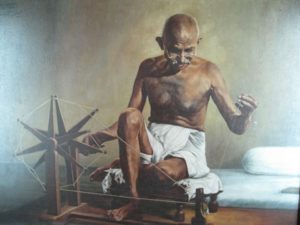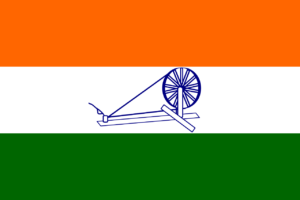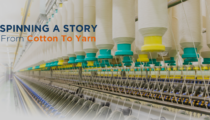Harvested cotton forms the raw material for the modern…
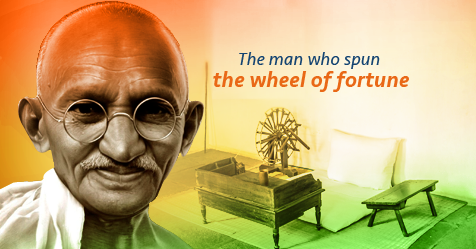
Charkha- A History Spun from Revolution to Liberation
They say the brightest of the diamonds are those which go through more pressure and heat. India has gone through a prolonged period of suffering and dependence and has outshone the world with its self-sufficiency and its prowess in every aspect.
India’s struggle for Independence is written in the pages of history by the sweat, blood, and sacrifice of millions of Indians who took up the Swadeshi and the Non-Co-operation movement led by the Visionary leader Mahatma Gandhi.
The Spinning Wheel or Charkha became not only a symbol of the revolution, but it now is a symbol synonymous with the power of self-reliance, perseverance, and determination. From then to now the Charkha has initiated an upheaval and marked the path of progress for the Indian Spinning can Industry.
Image Source: https://www.indianlink.com.au
The Wheel that Spun History: The spinning wheel has significance from the ancient times. The women of the household used to spin cloth as a part of their daily activity, it used to be a part of their dowry. During the rule of the East India Company, the British used to ship the raw cotton from India to England and the finished material would come back to India to be sold at exorbitant prices, thus causing Indian farmers and commoners to suffer from huge losses and poverty.
Mahatma Gandhi initiated the Swadeshi movement by taking up the charkha and encouraging the Indians to spin their own cloth. The cloth woven from the Spinning Wheel is known as Khadhi or Khaddar, meaning course cloth. The charkha became a symbol of self-sufficiency and freedom, so much so that the first Indian flag designed had the Charkha etched in the middle which was later replaced by the Ashok Chakra. This marked the beginning of the Indian Spinning Industry which has evolved through the years to reach the economic zenith that it has now achieved.
Image Source: Wikipedia
From Then to Now: The Swadeshi movement increased the demand for Indian Cotton Textile and Indian Textile Industry grew by leaps and bounds. Indigenous Industries began to spring up and lay their stronghold in the global industry, now the country is the world’s second-largest textile manufacturers.
The Textile Industry has since then gone through a profound change taking the path of progress initiated by Gandhi. Newer and newer, state of the art technologies has been introduced. Structures and applications taken up by the industry has shaped a bright and long-lasting future for the Indian Spinning Industry. Indian Spinning Companies and ancillaries are now taking part in International Events in the Textile space like CAITME 2017 which was recently held in Uzbekistan.
The history of Indian Spinning Industry has come a long way since the Charkha, but it still remains as a mark of faith, resilience, self-sufficiency, and sacrifice in the hearts of every Indian.
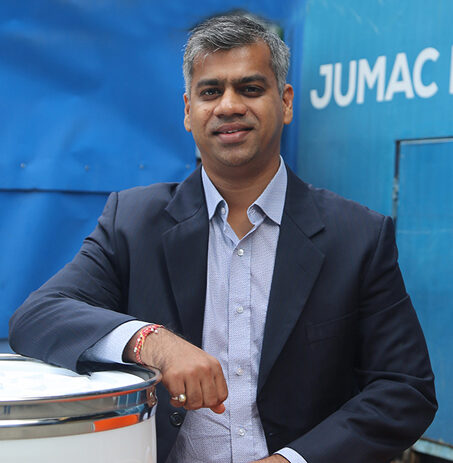
Passionate about transforming the industrial sector of textile and spinning industry with innovative solutions. Director at Jumac Manufacturing, leading spinning cans and accessories manufacturer and exporter from Kolkata, India.





